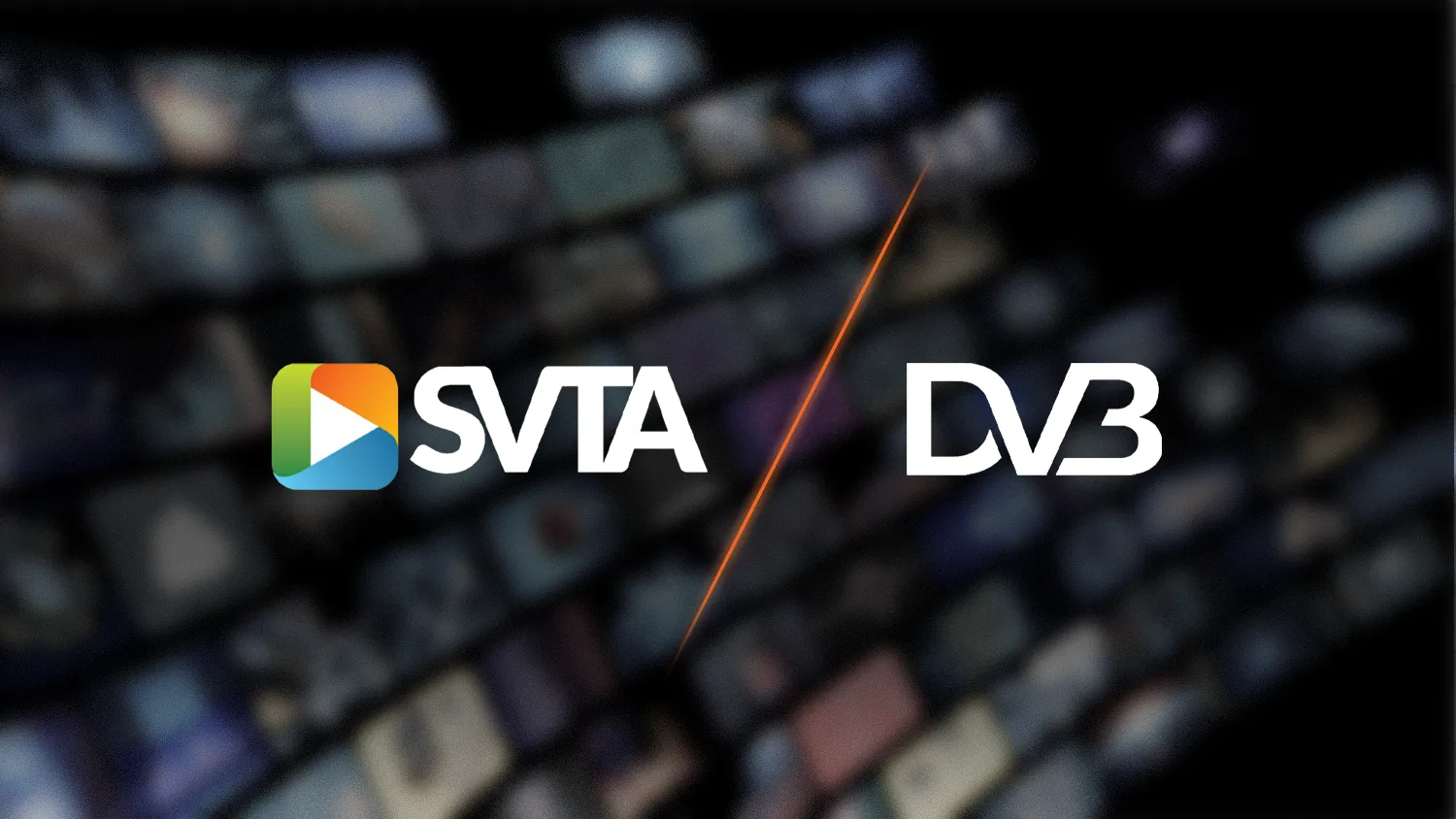The modern smart TV experience is a mess of clashing standards, where traditional broadcast and IP streaming fight for control on the same screen. In response, the DVB Project and the Streaming Video Technology Alliance (SVTA) formed a liaison agreement to build a more unified future. This collaboration aims to deliver consistent service discovery, metadata, and advertising models. But with broadcast distribution facing a potential sunset within the next decade, can these standards converge before an all-IP world renders them a footnote?
We spoke with Paul Markham, a broadcast and media technology veteran and the Organizer and Host of Cloud Native Media, a community for media professionals. A nominee for Inspiring Technologist by the Royal Television Society, he commends the collaboration as a laudable and important step, but believes the greater challenge is a race against time and shifting consumer behavior.
Engineer vs. EPG: The problem the DVB-SVTA collaboration is meant to solve has real-world consequences, creating practical barriers to accessibility. The result is that a simple utility becomes a widespread source of frustration. "My dad is a retired engineer, yet he couldn't figure out his new TV. This single device had three separate program guides, and switching between them was incredibly awkward. It felt like it had been thrown together by a techie with no thought for the actual user."
Button battle: Inconsistency extends beyond basic navigation. Markham points out that non-technical users prioritize consistency. "What non-technical users want most is consistency. When the rewind button does one thing in one app and something totally different in another, that inconsistency can be distressing for older viewers. It’s not just them. Neurodiverse users and many other groups find that lack of consistency very difficult to cope with."
Consumer demand, not standards bodies, increasingly sets the industry's direction. And manufacturers are not waiting. Companies like Samsung are already deploying AI-driven features to create a "fully personalized home screen," signaling the market's independent push forward. Markham highlights a simple user behavior that upends traditional broadcast models. "When a viewer is five minutes late to a linear broadcast, they want to watch it from the beginning. Suddenly, all of those clever multicast broadcast technologies are irrelevant because that viewer now needs their own individual stream. Consumer preference drives technology." This shift leads to an inevitable outcome for traditional broadcast. He observes, "While there’s debate over technologies like 5G broadcast and ATSC 3.0, some people are just saying all of that is irrelevant. The argument is that we're just going to be all on unicast IP, and the rest is a footnote."
Hardware trap: The industry faces a significant "hardware trap." Markham explains, "Unlike a smartphone app that updates weekly, televisions have long, inflexible lifecycles that bake in standards for over a decade. A hardware device may have all of its standards baked into it. Even if we converge standards, the life cycle of a TV is ten to fifteen years. That's a very long time."
Saying goodbye: Reports confirm that the UK's core satellite infrastructure will reach its end-of-life around 2029. Terrestrial broadcasting licenses in the UK also have less than ten years to run. "The UK’s terrestrial broadcasting licenses have less than ten years to run, and there's a passionate debate about whether the system will carry on. Paying for distribution that not many people are watching becomes a political situation, especially as broadcasters are under pressure," he says.
The most obvious financial incentive to fix this fragmentation is addressable advertising, but that opportunity introduces its own challenges. Broadcasters must perform a delicate balancing act between commercial interest and audience trust. "Commercially, broadcasters want addressable advertising, but they are sensitive to alienating audiences over privacy concerns. What’s interesting, though, is that people's views on privacy seem to soften over time, eventually reaching a point where they feel it doesn't really matter."
These problems do not exist in a vacuum. Markham suggests the industry’s own structure and business models contribute to its difficulty in moving quickly. "The broadcast industry has too many standards and trade bodies. From a vendor's perspective, this creates a frustratingly long list of membership fees, and smaller, innovative companies often get left out simply because they can't afford a seat at every table," he says.
For all the challenges, Markham says he respects the effort being made to make watching a smart TV a better experience for the viewer. The DVB-SVTA collaboration represents what proponents see as a necessary step toward a more user-friendly and inclusive media future. But its success hinges on a race it may not be able to win. "It's not going to be easy, and it's not going to be quick," he concludes. "I have all the respect for them for taking the plunge." The question is whether DVB and SVTA can achieve alignment faster than the market moves beneath their feet, or if they risk creating elegant solutions for a world that, by then, may no longer exist.

